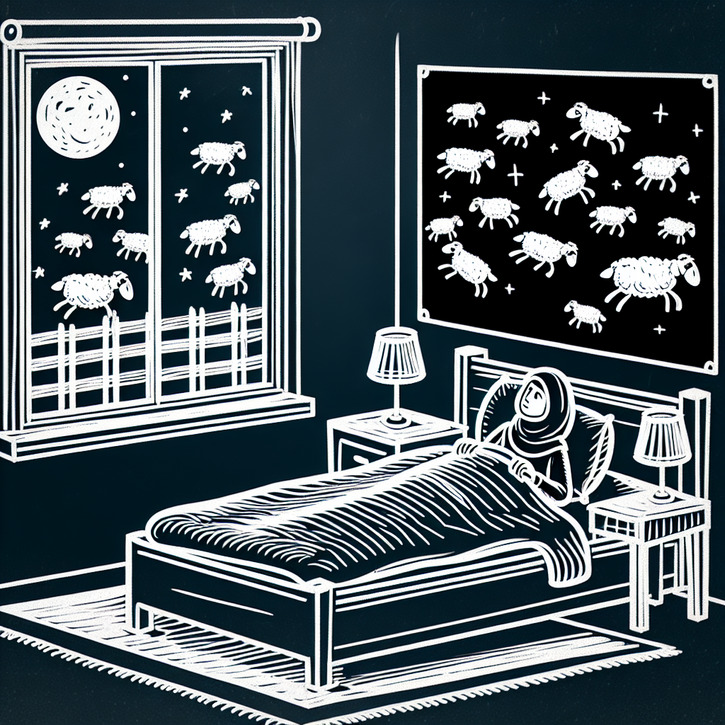Sleep Issues: Արդյոք հասկացումը և լուծուցչերը

Sleep Issues: What They Mean and How to Tackle Them
Breaking Down Sleep Issues and Their Roots
Nowadays, sleep issues—think insomnia and even oversleeping—are a hot topic that touches on both our physical and mental well-being. In this piece, we’re diving into what sleep issues really look like, backed up by solid scientific research. Understanding these challenges means blending medical insights with real-life experience, so you get a fuller picture. We’re talking about everything from physical health to social stressors and mental pressures—each playing its part in how sleep problems develop. Plus, modern approaches, be it through wellness workshops or the latest scientific breakthroughs, are all in the mix.
What makes cracking the code of sleep issues so important is that it isn’t just about individual anecdotes; it’s about blending personal experience with broad social and medical research. Unraveling these problems pushes us to explore practical solutions and fresh innovations. In this section, we’ll also highlight some common limitations that shape our approach, ensuring that whether you’re working on your own routine or part of a larger community effort, you’re armed with strategies that really work.
Thanks to the enthusiasm and drive of younger generations, there are increasingly more opportunities for support and policy changes concerning sleep issues. The way these challenges ripple through our society isn’t just felt individually but also influences our cultural values and personal beliefs. That’s why building new frameworks and charting the right paths is so crucial when it comes to finding integrated solutions for sleep issues.
A Journey Through the History and Perceptions of Sleep Issues
When you look back, the history of sleep issues is rich and complex, filled with shifts in how we view and address them over time. Diving into this history, it becomes clear that early interpretations—and even those from sophisticated cultures—helped shape the way we understand sleep problems today. Many traditional frameworks attempted to uncover sleep issues by drawing on cultural insights and age-old wisdom. By connecting these historical perspectives with international experience, we can start to see how these challenges developed and transformed through the ages.
Experts often blend elements from various eras to shed light on sleep issues, showing us how different periods and approaches have contributed to our current understanding. Explaining the cultural and historical echoes of sleep issues can help unravel why certain factors still impact us. These fascinating historical journeys offer us a set of benchmarks—in many cases, a diverse array of viewpoints—that merge cultural, contemporary, and international experiences on the subject.
The evolving cultural attitude towards sleep issues has grown alongside our technological advances and the modern global economic landscape. These shifts shed fresh light on a topic that has long been a stumbling block for both advice and therapeutic practices. Today, new indicators and practical methods are emerging, influenced by trends in green technology, healthcare innovations, and cultural exchanges. No wonder these discussions continue to stir robust public debate.
Key Causes and Underlying Triggers of Sleep Issues
When it comes to the root causes of sleep issues, the explanations are as varied as they are complex. Often, these problems pop up due to personal health challenges, soaring stress levels, or even simply not having the ideal environment for sleep. In many cases, reactive changes in our bodies spark a cascade of sleep-related difficulties. Of course, to truly grasp how impactful sleep issues are, it’s essential also to look at long-term trends and nuanced experimental data that highlight how changes in our daily environment contribute to these problems.
Medical experts dig deep into the biological mechanisms behind sleep issues, pointing out that nervous system imbalances and overall health concerns are key players here. It turns out that the disruptions affecting natural sleep cycles are closely tied to our overall well-being. Equally crucial is understanding how factors like happiness, relaxation, and life energy play their part, unveiling a broad spectrum of causes.
Everyday circumstances also weigh in big time on the emergence of sleep issues. Think about how rapid technological changes, ever-evolving work routines, and shifts in our social landscapes impact our habits. Such factors often land us with physical discomfort, poor rest, and even a heightened mental load. This hands-on approach, backed by both historical insight and practical help, affirms that anyone can tap into innovative strategies and up-to-date knowledge to better manage their sleep challenges.
Treating Sleep Issues in Children and Adolescents
When it comes to treatment, sleep issues become particularly tricky with kids and teens. In younger populations, sleep problems often show up in unique ways, making them especially challenging to diagnose and address. It’s important to consider that these behaviors can vary widely depending on the stage of life, biological changes, and even the mental state at the time. In today’s fast-paced world, aside from physical challenges, ongoing stress, feelings of overwhelm, and a disconnect with modern surroundings can all make sleep issues even more pronounced among the young.
It’s vital to remember that treating sleep issues in children and adolescents calls for a multifaceted approach. This might include a mix of medication, counseling, and psychological techniques. Medications, when used appropriately, have been shown to work effectively according to industry studies. So, it’s always key to approach these delicate cases with a detailed plan, ensuring every aspect of the child’s well-being is supported.
Moreover, managing sleep issues in youngsters often relies on modern educational and therapeutic practices. This not only boosts the support network for children, but also reinforces the need for balanced care in both academic and health settings. Recognizing sleep issues early on is crucial, as it lays the groundwork for long-term health and overall developmental balance.
Assessing and Diagnosing Sleep Issues
Pinning down sleep issues accurately means combining a few different strategies. The process often involves a blend of clinical evaluations and lab tests to get to the bottom of the matter. By mixing detailed personal histories, biological data, and other diagnostic experiments, experts can truly ascertain the full picture. With modern technology and years of medical expertise at hand, researchers are building assessment systems that meet today’s rigorous standards.
Laboratory and clinical tests, when used to evaluate sleep issues, give us a neat breakdown of the process—ensuring everyone gets clear, personalized insights. It’s all thanks to the combined efforts of experienced physicians and cutting-edge technologies that offer a multi-layered understanding of these challenges. This synthesis of scientific investigation helps produce solid, thoroughly verified results that reveal how sleep problems operate.
Integrating artificial intelligence, smart monitoring systems, and other innovative tools into sleep studies opens up exciting new avenues for precise evaluation. Often, these methods are managed with reliable digital systems widely used in medical settings, which collectively support patient records and clinical opinions. It’s also crucial to highlight that the modern approach to diagnosing sleep issues strikes a delicate balance between seasoned clinical judgment, research-backed evidence, and robust social backing.
Monitoring the Situation and Implementing Controls for Sleep Issues
The way our lifestyles change and how we gauge our health is drawing serious attention to sleep issues in today’s fast-moving world. At this stage, it’s all about figuring out how to adjust and manage sleep issues using proactive, life-affirming techniques. Another angle is reexamining these matters through the lens of the latest scientific thinking and real-world experience, which helps us fully grasp what good health really needs. At the same time, support from various organizations ensures that everyone gets a fair shot at trying out new ideas and methods crafted to prevent and regulate sleep issues.
Many practical approaches to managing sleep issues are built on straightforward, proven strategies that work on both personal and community levels. Collaborative efforts between experts allow us to tap into a wealth of health knowledge, paving the way for modern solutions that can effectively sidestep sleep problems. In this sense, our strategy is a blend of youth, technology, and scientific insight, all backed by solid industry support—ensuring that every individual experiences the process as a central part of modern life.
Real-life health metrics, when combined with cooperative strategies to prevent sleep issues, create reliable systems aimed at promoting a healthy lifestyle. These strategies not only spotlight key features but also contribute to societal welfare at large. Ultimately, these methods are designed so that every person has the opportunity to receive natural and effective help, using a blend of historical insights, technological advances, and thoughtful techniques.
Future Strategies for Overcoming Sleep Issues
Looking ahead, the leading ideas and innovations in sleep issues are all focused on recovery and proactive measures. When you take into account recent breakthroughs in addressing sleep issues, various countries are starting to implement creative approaches that show promising, tangible results. These forward-thinking strategies, grounded in modern science, technology, and visionary approaches, work together to build a system that truly supports a healthy life.
This blend of history, modern practice, and innovation is fueling a new wave of understanding in sleep issues. As we forge ahead, these methods and theories will continue to evolve and shape tomorrow’s approach to tackling sleep challenges, ensuring that every step we take is backed by the best of science, technology, and a genuine care for well-being.






